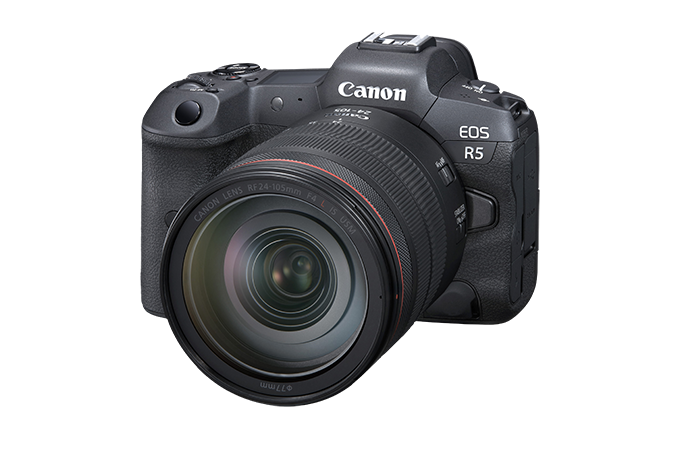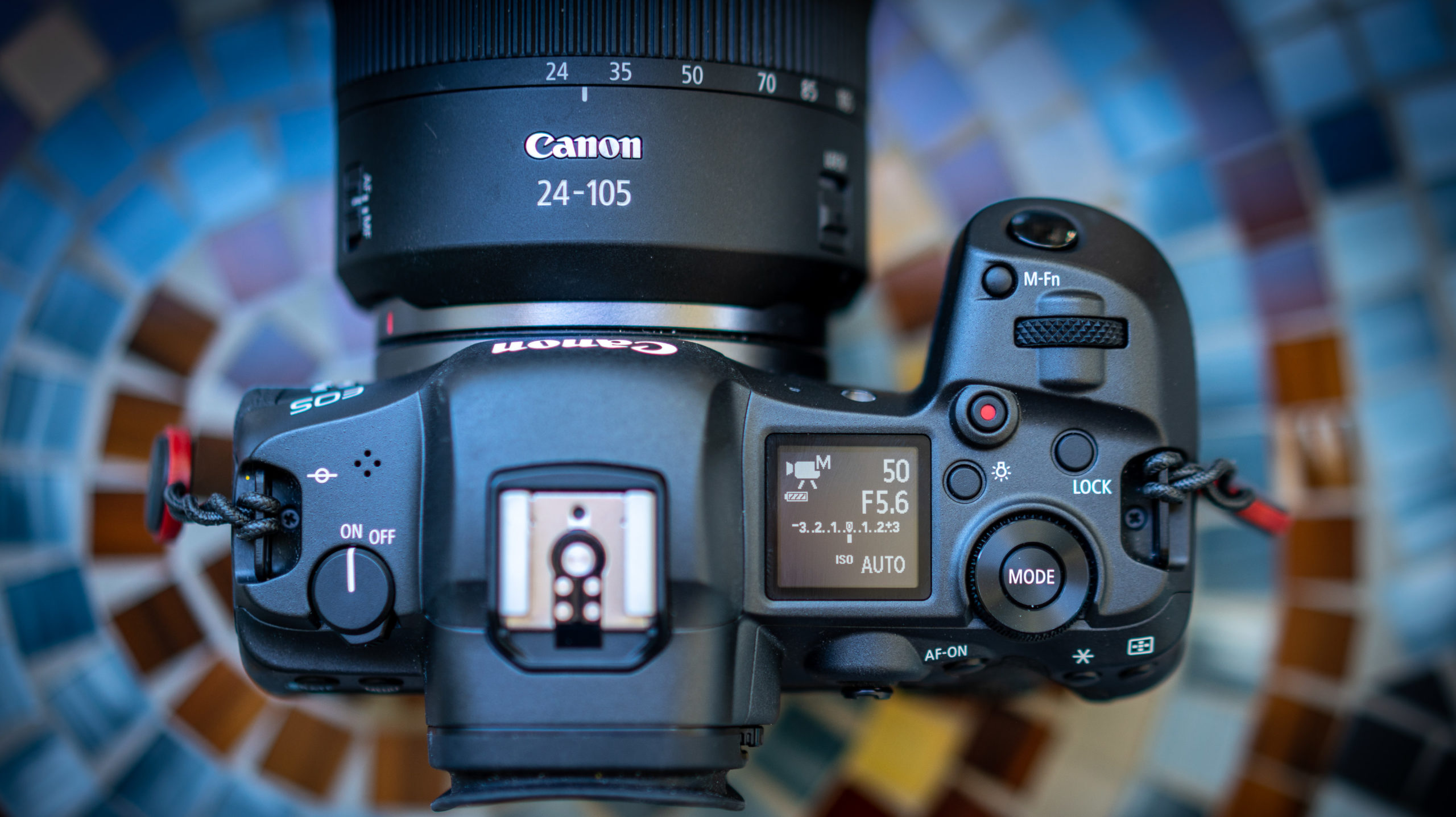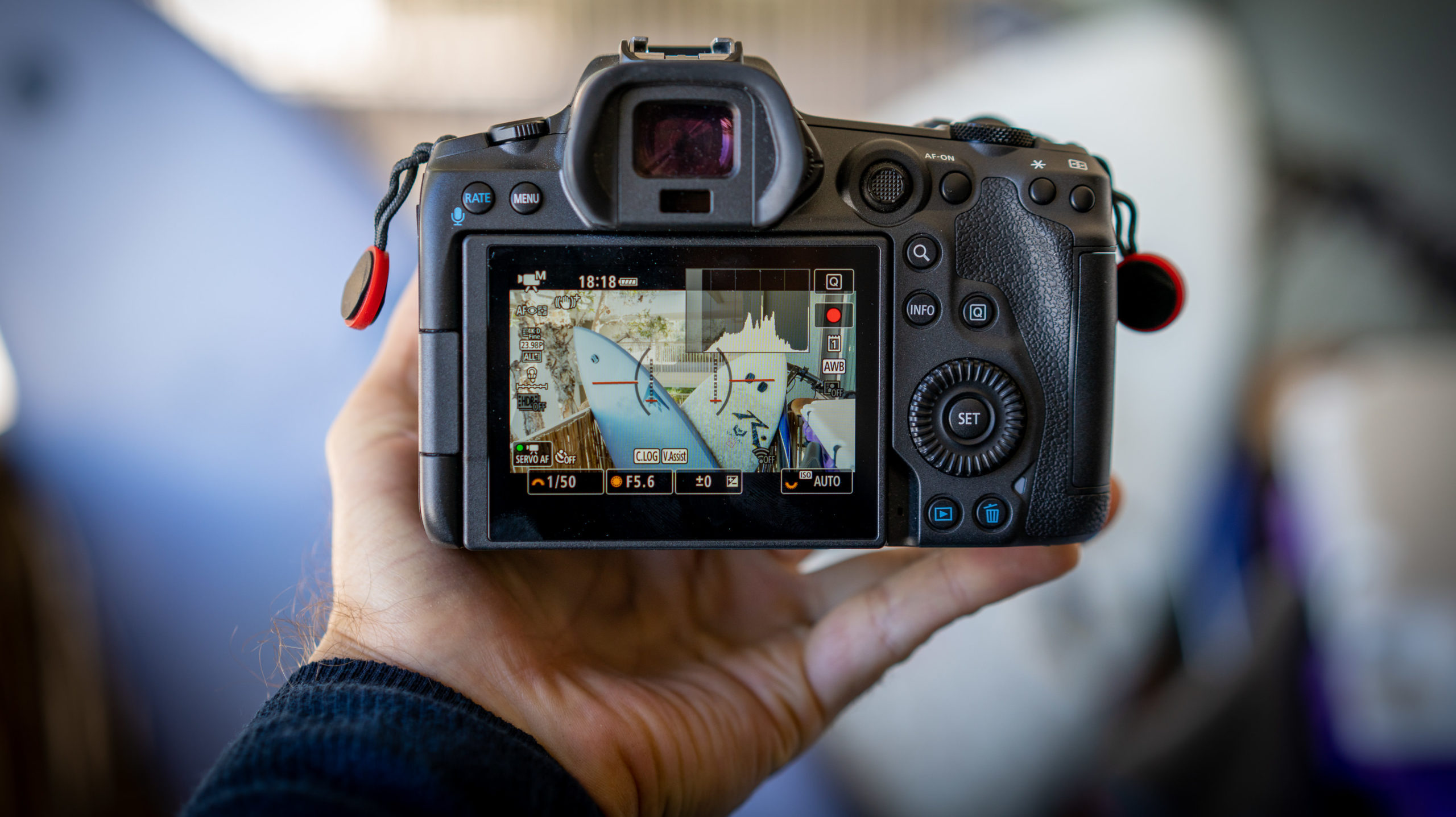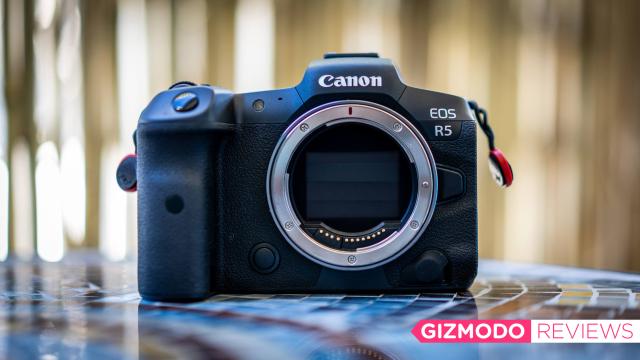There once was a badass Greek warrior. Indeed, he was the badassiest of them all. He was the perfect killing machine, except for one little thing which took someone who was otherwise invincible and made him…vincible. Now, Achilles isn’t a perfect metaphor for the EOS R5, which I think is the best camera Canon has ever made, but it does have a weak spot — a vulnerable heel, if you will. Many won’t even notice the issue. For others, it will be a fatal flaw.
Canon’s first full-frame mirrorless camera, the EOS R, came out in 2018, and I really wanted to like it, but I couldn’t. It felt a bit thrown together, as if Canon knew it was last to the full-frame mirrorless game, and had to just get something out there, even if it was missing a lot of stuff. I am happy to report that the EOS R5 corrects virtually every one of those issues, and then some. It shoots 45-megapixel uncompressed RAW stills at a very respectable 12fps clip with the mechanical shutter engaged (or 20fps compressed RAW with the electronic shutter), with excellent image stabilisation and autofocus tracking. Generally speaking, these photos look phenomenal.

Canon EOS R5
What is it?
Canon’s latest and easily greatest 45MP full-frame mirrorless camera.
Price
$5,478
Like
Stills are absolutely gorgeous, incredible autofocus, and solid in-body image stabilisation. Can shoot 8K30 and high quality 4K30 10-bit video buuuut…
Don't Like
The high end video modes cause the camera to overheat and it takes a million years for it to recover, video settings are wonky, dynamic range leaves a little bit to be desired.
But let’s dive into the hardware. The EOS R5 has some serious heft to it. There’s a big, beefy grip that DSLR shooters will generally love. The EOS R had a capacitive touch-bar as one of its control mechanisms, and it was pretty terrible. It’s gone now! Yay! Instead, the R5 has a standard joystick which is much easier to use — though it does depress a little easily which would lead to accidental clicks when I was just trying to scroll. The R5 also adds a lower thumb wheel on the back, which I love, but I prefer Sony’s implementation, in which it doubles as a four-way D-pad. All of the other buttons and wheels have a good amount of click and enough separation that I was able to adjust settings even when wearing heavy winter gloves. I mostly shot with Canon’s workhorse 24-105mm f/4.0 zoom and its incredible 50mm f/1.2 prime. Both lenses are heavy and chonky, but they are so good I genuinely didn’t care (especially that 50mm).

The R5 has an electronic viewfinder with 5.76 million dots of resolution and a refresh rate of 120Hz, so things look smooth and very sharp, but it’s still a ways behind from the Sony A7S iii’s EVF with a bananas 9.44 million dots. The R5 now has two memory card slots: one SD UHS-II, and the other for a CF Express Type B. CF Express is newer and more expensive, but it’s also a hell of a lot faster, and you’ll need it for some of the higher-end video modes, which can’t be shot to the SD card. I made the mistake of buying a 128GB Hoodman Steel CF Express card for this review and I kept getting an error saying: “Movie recording has been stopped automatically. Slow card write speed.” On paper the card should be fast enough, but I later read other reviews saying they had this same issue with this camera and this card, so spend the extra $25 or so for a Sony card if you would like to avoid this headache.

The EOS R5 is the first camera to get Canon’s new autofocus system, dubbed Dual Pixel CMOS AF II, and it somehow covers 100% of the image sensor. It is absurdly good. Its Eye-AF was incredibly accurate, nailing the retinas of subjects, both human and animal. It’s now at least as good as Sony’s Eye-AF, but then it goes one better: When it can’t find an eye, it diverts to subject tracking automatically. It does this in still and video mode, and you can adjust how sensitive you want it to be and how smoothly you want it to shift focus. It also works at up to six stops below optimal exposure (-6Ev) if you’re shooting with a f/1.2 aperture lens, meaning it can focus in the dark better than a lot of humans. In busy scenes with more than one potential subject, it was prone to getting confused about which was the important thing to you, but that was easy to fix with a quick tap on the back of the screen.

The original EOS R didn’t have any in-body stabilisation, and that was not so great. The R5 has five-axis stabilisation that’s as good as any I’ve used. It has a maximum compensation of between 6.5 and 8 stops, depending on what lens you’re using. I wasn’t able to measure that metric scientifically, but I can tell you that I was able to take handheld photos that I had no business taking. The shot above, with the focus on the icy needles at the top of the tree and the stars in the background, was shot with a shutter speed of 1/8 of a second. My hand is not that steady! I typically try to keep things above 1/60.
Generally speaking, photos look excellent. When the lighting was good, many photos I took needed almost no tweaking at all. They looked sharp and vibrant, and while they came off as realistic, they also have a film-like quality that I love. The only way that it doesn’t measure up to my current go-to camera (still the Sony A7R iii) is in dynamic range (meaning the difference between the lightest thing and the darkest thing within a photo where both are still usable). It isn’t quite as good at recovering blown-out highlights, but even more importantly, the shadows aren’t nearly as flexible. When attempting to push shadows back up to recover detail, noise becomes a real problem, and it frequently has a purple-ish hue. I had to lean on the Noise Reduction panel in Lightroom way harder than I would like to, which can’t hide all sins and sacrifices sharpness, too. Dynamic range on the EOS R5 is good, but it isn’t great.
“OK, OK,” you say. “This all sounds quite good! Where’s the damned Achilles heel you teased?” Well, if you’re strictly a photographer, there isn’t one. And if you’re almost exclusively a photographer who just takes a tiny bit of video here and there, then you’re probably OK, too! But if video is important to you, well, here comes the poison arrow.
The EOS R5 is capable of shooting 8K RAW video at 30fps, something even the mighty Sony A7S iii can’t do. Most of us don’t really need 8K yet, but the camera has a neat trick where it can take that whole 8K frame and compress it into a super high-quality 4K image (HQ mode) at up to 30fps. Best of all, the massive 1.7x crop from the EOS R is gone, so you’re able to really use all of that Canon glass as it was intended. If you’re shooting in Canon Log (a flat colour profile) you can shoot 10-bit 4:2:2 video in camera, which gives the footage a lot of flexibility for colour correction and applying cinematic looks. That is all great news. The 4K HQ C-Log mode is truly gorgeous and is what I would recommend using all the time…except you can’t, because the EOS R5’s overheating issues are mind-bogglingly bad.
Let me qualify this. If you’re out in the field, mostly shooting photos, and occasionally shooting short 4K HQ videos, you’re probably going to be just fine. If you want to shoot longer videos, though, it’s a non-starter. I found that the camera overheated after just 24 minutes of shooting in HQ mode. That’s bad, but what’s worse is how long it takes to recover from overheating. We’re talking upwards of an hour until it’s fully back to normal and you can shoot more than a minute or two of video again. If you are shooting for a client, or at a wedding, that will get you fired on the spot. I shoot interviews and documentary-type stuff, and here, again, this camera would be useless. Same for vloggers.
Now, it does have a regular 4K mode, and that mode doesn’t suffer from overheating problems. It looks…fine, until you compare it to the HQ footage and then you realise how much detail you’re missing. It’s significant. The regular 4K mode looks downright mushy by comparison. There are other drawbacks that indicate that video was really an afterthought for Canon, despite the fact that the company hyped 8K and HQ 4K at launch. Changing from stills mode to video mode is kind of a pain. You can hit the record button in stills mode and snap a quick video, but instead of defaulting to your last-used video settings, it shoots 1080p30 for some stupid reason (if there is a way to change this, I haven’t figured it out, and Canon didn’t respond when I asked). It has a high-frame rate mode that shoots 4K at 120fps, but then it slows it down in the camera to 30fps, which is annoying if the rest of your project is 24fps. Changing between video modes (HQ, high-speed, C-Log, etc.) is unintuitive and takes way more clicks than it should.
[referenced id=”1626442″ url=”https://gizmodo.com.au/2020/12/a-youtuber-made-a-water-cooling-rig-to-combat-the-canon-r5s-overheating-issues/” thumb=”https://gizmodo.com.au/wp-content/uploads/2020/12/03/luksf4vohkngksp1thxk-300×158.png” title=”A YouTuber Made a Water-Cooling Rig to Combat the Canon R5’s Overheating Issues” excerpt=”The Canon R5 is a seriously impressive camera and one of the cheapest mirrorless cameras you can buy that supports full 8K video capture. Unfortunately, those fancy video capabilities come with a serious drawback: major overheating issues. So to address the R5’s limitations, YouTuber Matt Perks created a custom cooling…”]
This is all tremendously frustrating. This was poised to be the camera that would bring me back to the Canon ecosystem with all its tasty glass, and on paper it really looked like it would. I consider myself a hybrid-shooter, though, meaning I shoot a lot of photo and a lot of video. More and more that’s becoming the rule, not the exception, for content creators. This camera simply cannot keep up with those demands, and ultimately, I don’t think it should have launched until it could. Sony took forever to come out with the A7S iii, but when it launched you could shoot 10-bit 4K120 until the cows came home in slow-motion and the thing wouldn’t overheat. It just feels like Canon fumbled and face-planted on the one-yard line, and that really sucks.
Again, if you really only care about shooting stills and just want to shoot a bit of video here and there, I recommend this camera without hesitation, especially if you already have Canon lenses. I loved shooting with this camera and the photos it produces are beautiful. For everybody else, I’m sorry — this camera is just a massive tease. It showed what it’s capable on the video side, with truly beautiful 8K and HQ 4K footage, but it can’t be relied on to produce enough of it, at least not for those of us who want to capture high-quality 8K video on a regular basis. Canon has received a massive amount of criticism for the overheating issues, and I’d bet good money that its engineers are working hard on solving it for the Mark II version. I think that camera would eat everybody else’s lunch (as this one could have done), but we’ll just have to wait and see.
README
- Gorgeous 45MP RAW photos at up to 12fps uncompressed (20fps compressed)
- Best eye and face focus-tracking I’ve used
- Optical image stabilisation is excellent for stills
- 8K and HQ 4K video looks stunning, but camera suffers from debilitating overheating issues
